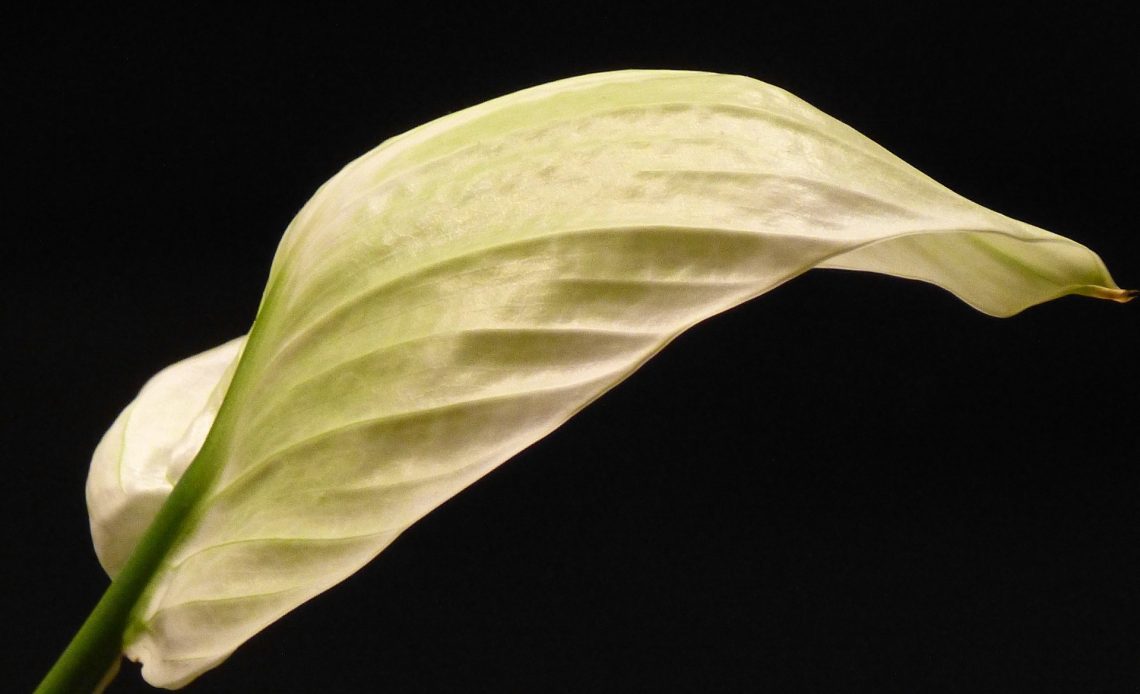

We’re here to help! Wild Yards is a completely free website that is 100% dedicated to helping you create a wildlife-friendly, sustainable yard. Read more
WildYards is reader-supported. When you buy a product through a link on our site, we may earn a comission. Every product is independently selected by our (obsessive) editors and our reviews are unbiased and objective. Read more about our mission or our privacy policy.
Delightful to look at and generally easy to care for, the peace lily is a popular plant many people choose for indoor and outdoor growing. Despite the easy-going nature of this plant, you may find yellow leaves on your peace lily starting to develop – why is this?
Yellow leaves on your peace lily can be caused by overwatering, underwatering, imbalance in sunlight, and fungal disease. While these plants will fare well without much intensive care, it’s important to know how to bring your peace lily back to full health if it’s looking a little yellow.
Why your peace lily leaves are yellowing – and what you can do about it
It’s important to remember that not all peace lilies are the same – but how you look after your plants will dictate how easily they succumb to leaf yellowing. Below are just the most common causes.
You’re overwatering your peace lily’
Peace lilies demand well-draining soil to balance moisture effectively. A poor-draining growth medium will simply keep its roots wet, potentially leading to rot. A telltale sign on the horizon is the slight yellowing of your peace lily’s leaves.
Your peace lilies should only be watered when the top layer of the soil is dehydrated or dry to the touch. Ideally, your lilies will only need a light mix of soil – don’t be tempted to make their medium too dense, restricting water drainage.
A potential fix may be to add peat moss and perlite or even coconut husk to the medium. This addition will help to absorb moisture while keeping the soil relatively damp. You should also ensure that your pot – if your lily is contained – has drainage holes that are uncovered during watering. Otherwise, water will simply pool in the base of the pot, causing your plant to rot and develop yellow leaves.
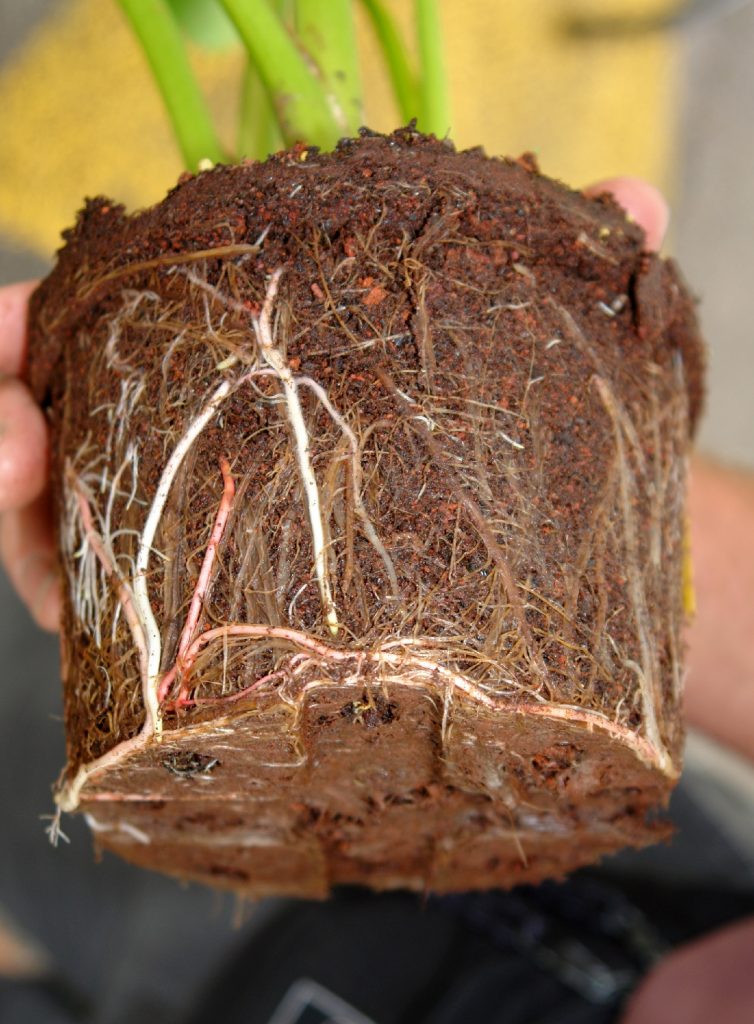
You’re not watering your peace lily enough
As much as peace lilies demand clear drainage, yellowing leaves can signify that your beloved plants are extremely thirsty. Peace lilies can readily handle short periods of drought, but if you notice the top layer of soil is dry, give your plant a drink. As above, if the soil is already damp, it’s not draining enough.
Typically, peace lilies will need full watering about once a week to every two weeks. Conditions in your garden (or inside your home if your lily is an indoor plant) may dictate how often this watering takes place, so lead with the soil dryness test before creating any kind of schedule.
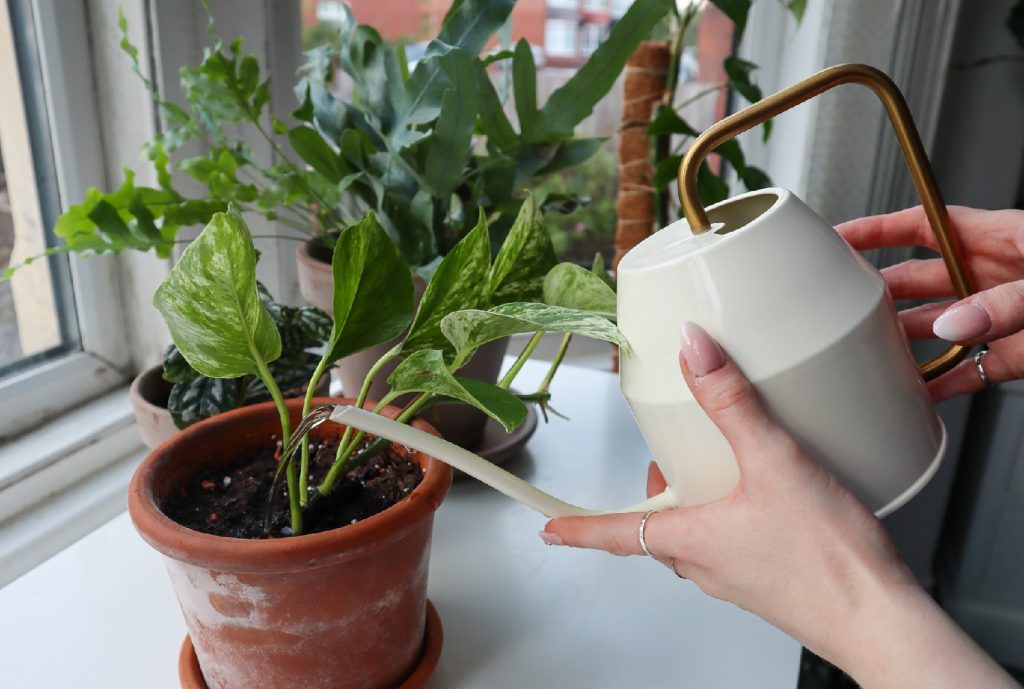
Your plant dislikes the water you feed it
Like many plants, peace lilies can react poorly to faucet water treated with certain chemicals or contaminants. Your faucet water may contain chlorine, fluoride, and high levels of heavy minerals depending on where you live. While these elements are safe for us to drink in small doses, peace lilies prefer to drink pure and untreated water. A yellowing leaf or two may indicate you need to dechlorinate or purify the water you provide to your plants.
A quick fix may be offering your peace lilies filtered water – which is easy to come by if you’re already using home filters (such as those manufactured by BRITA). An inexpensive and more organic solution can be to collect rainwater during deluges. Consider setting up a bucket or watering pail on a rainy night or investing in a water butt that will collect and dispense natural precipitation so you can feed the rest of your garden during dry periods.
Alternatively, you can naturally dechlorinate water for plants by leaving a glass of H2O in direct sunlight for 24 hours (up to 48 hours, max) – as this will allow chemicals to evaporate naturally. Finally, you can combat yellow leaves by boiling and cooling faucet water before feeding.
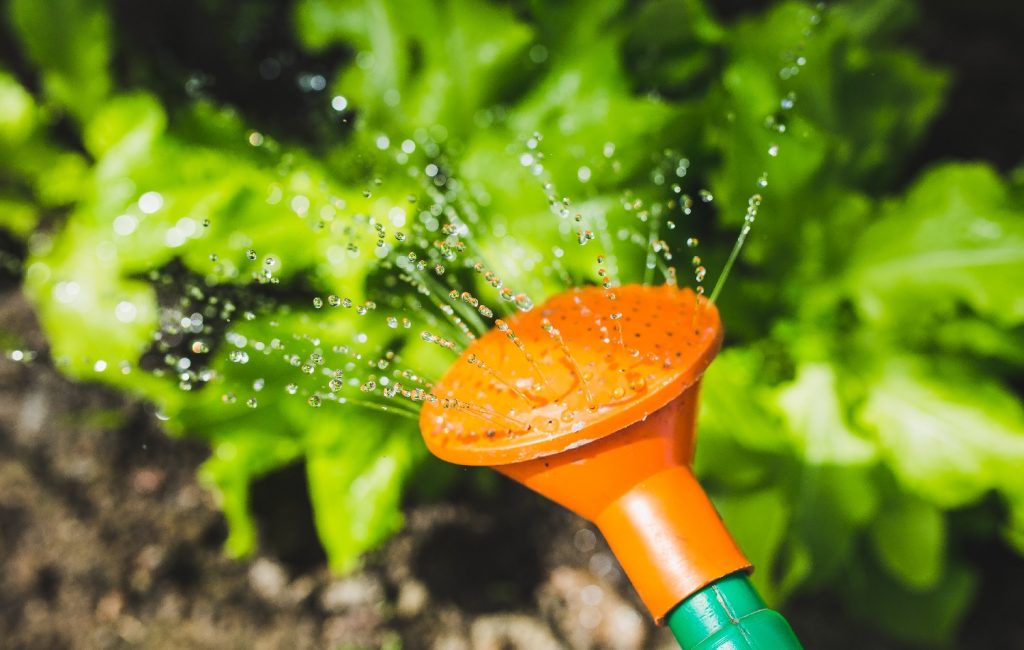
Your peace lilies aren’t getting the right amount of sunlight
As well as turning them yellow, too direct sunlight can burn peace lily leaves – they’re at risk of turning black and flaking up. It is important to remember that peace lilies are a tropical species, largely found thriving on jungle floors. In the wild, they are largely shaded by large canopies of trees and leaves, only receiving patches of sunlight throughout the day. Keeping these plants in the wide open sun or in front of a very sunny window can lead to their leaves changing color and dying off.
If planting outside, give your peace lily a spot that’s half-sun, half-shade. Inside, try and choose a spot close to an east-facing window. This will ensure that it gets a healthy dose of sun that’s relatively indirect. They thrive well in the darker spots of your garden but still need access to a few hours of dappled light – morning light may be best for these plants if you can position them carefully in your garden.
Just as much as your peace lilies may suffer from too much sunlight, they will still develop yellow leaves if they’re left in complete darkness. Try to bring your lilies into the full light for a few days to counteract a lack of sun.
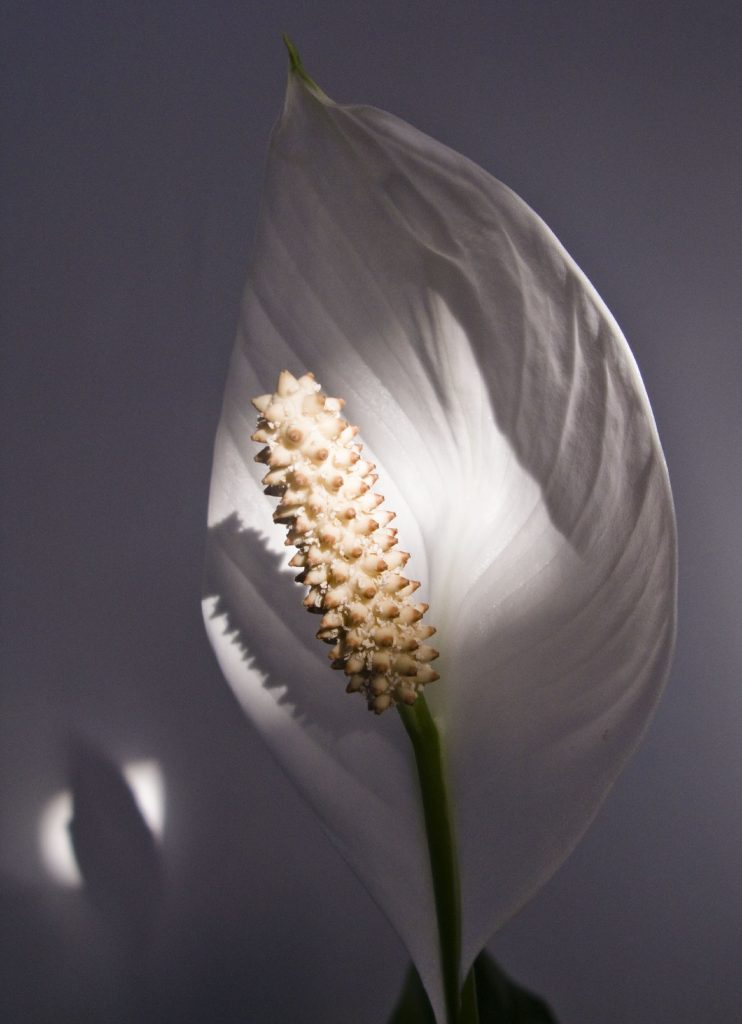
Your peace lily is struggling in extreme temperatures
As tropical plants, peace lilies enjoy warm, humid temperatures – if left outside in the cold or even in the colder parts of your home, their leaves can turn yellow, potentially proving fatal. Peace lilies typically thrive in conditions between 65˚ and 85˚ Fahrenheit – and while many gardeners choose to bring them indoors to counteract temperature drops, they can just as easily develop yellow leaves if they get too hot.
If outdoors, try to keep your peace lilies in an area of your garden that gets a good balance of dappled light and direct heat for a few hours a day.
You can quickly test whether or not temperatures are affecting your peace lily simply by placing a thermometer close to where the plant is based. If the temperature is below 65˚ or higher than 75˚ F, you’ll likely need to move your lily to help moderate its thermostat.
Inside the home, it may be prudent to move your peace lilies away from windows even during colder seasons.
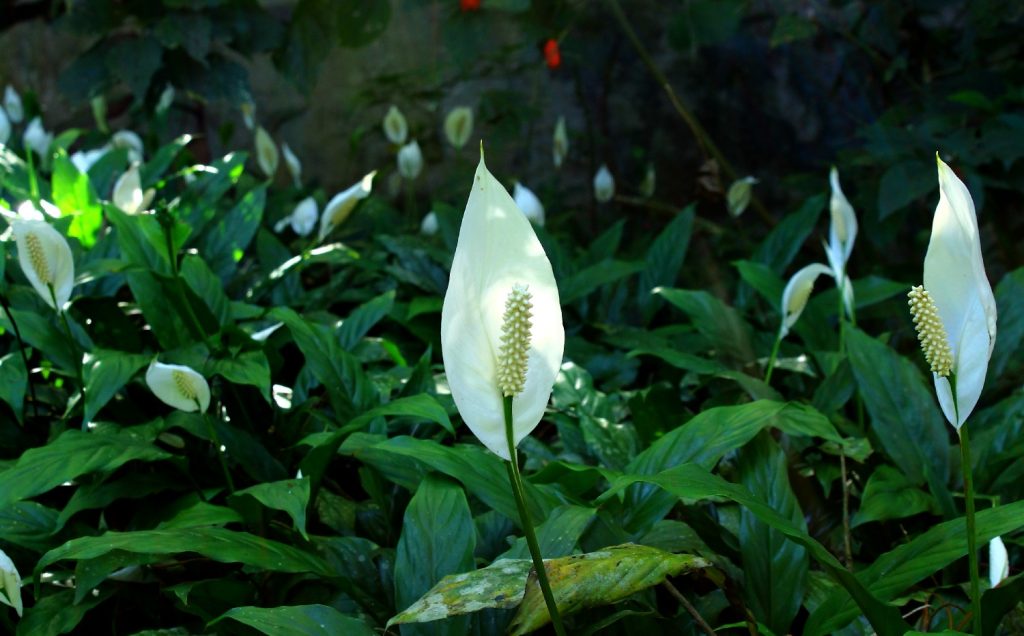
Your peace lily is very hungry
Healthy peace lilies thrive on nitrogen, iron, and magnesium – not just water alone. While these plants will typically fare well in untreated soil, yellowing leaves may indicate you need to give your peace lily a quick feed.
Try adding liquid fertilizer to a peace lily showing signs of undernourishment – including when you’re repotting a plant to travel indoors. Sometimes, it can take up to two weeks for hunger symptoms to subside.
Simply providing your peace lily with new soil – perhaps even a mix of nutrient-rich compost – may be enough to bring the color around in your plant’s leaves. If you’re repotting them outside or are bringing them into your home, it’s worth choosing a different container and growth medium altogether.
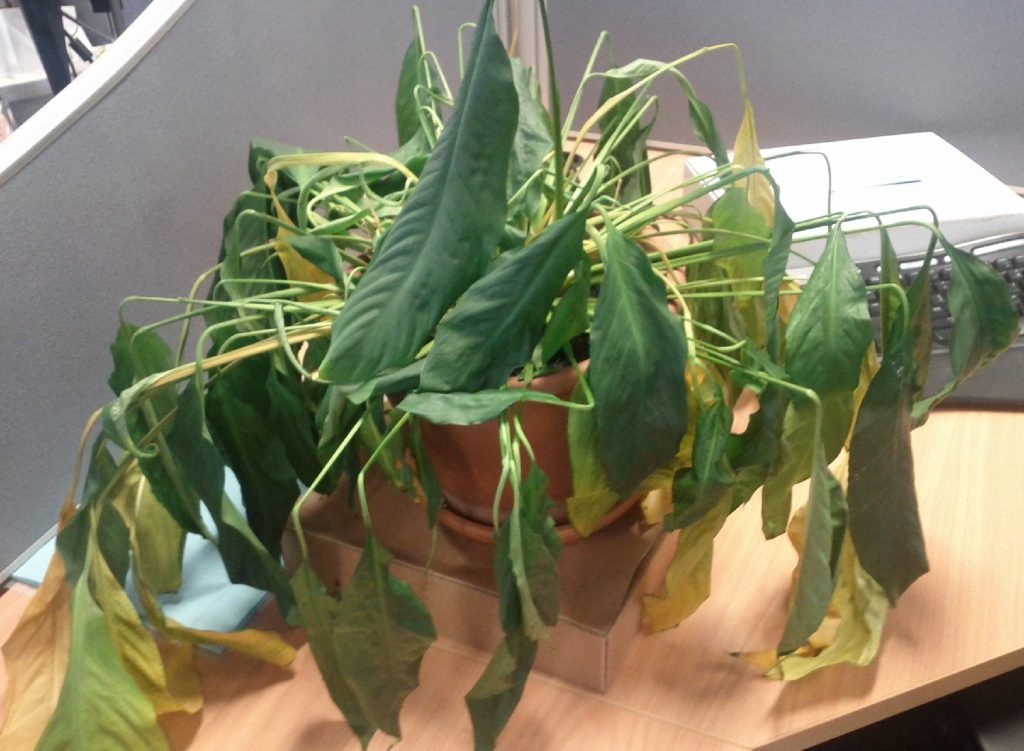
Your peace lily’s suffering with pests
Peace lilies rarely suffer from garden pests but look for insects such as aphids, spider mites, or mealybugs. These minibeasts can cause stress and shock – such as yellowing of leaves.
Even the presence of just one kind of pest can cause a lot of stress to your peace lilies, leading their leaves to start yellowing. In many cases, simply picking bugs away from your plants by hand may be enough if you see enough of them by sight alone.
It’s also worth considering filling a spray bottle with water – or even some mixed with dish soap – to repel garden pests. This concoction works well with aphids, though it’s a mild, unproblematic solution that should ward away much-unwanted interest.
Alternatively, spider mites and mealybugs tend to find neem oil spray repulsive – consider using a little on your peace lilies to reduce leaf yellowing.
If you don’t wish to use sprays, consider attracting animals into your garden that can take care of bugs and insects naturally. For example, woodpeckers and hummingbirds will help reduce flying insects that cause serious problems for your most sensitive plants.
Your peace lily’s developed a fungus
In some cases, leaf yellowing may indicate that a peace lily is in the early stages of a fungal infection – which may be challenging to reverse.
Phytophthora parasitica, for example, is a common fungal disease that can severely affect peace lilies, which can make itself known through leaf yellowing.
But, the real clue will be if you spot any gray or black fungi growing on your plant.
Sadly, if left to prosper to the point where leaves are turning yellow, and fungi are developing en masse, you may need to uproot your peace lily completely. This degenerative disease can spread from plant to plant – the only way to prevent it from spreading further is to dispose of infected specimens.
If a fungal infection is only minor, start by cutting off any affected leaves and regularly check your peace lily to ensure that symptoms don’t return.
Your peace lily’s in shock
Occasionally, peace lilies can react poorly to transplanting or repotting. If, for example, you choose to move your peace lily from one particular medium or soil type to another, it may develop yellow leaves as it struggles to adjust. The same may apply if you suddenly move your plant from a particularly sunny spot to a shaded area.
Like other sensitive plants such as lavender, peace lilies need gentle assistance in healing from various ailments such as those listed in this guide. Be sure to plant your peace lilies in new spots across your garden or new corners of your home. A gradual adjustment will help prevent your plants from going into shock.
It’s just nature taking its course
Although peace lily yellow leaves may seem alarming, in some cases, they may not suggest any deeper problem. The older a leaf gets, the more it yellows – eventually, peace lily leaves will wither and fall off on their own.
Should I remove yellow leaves from my peace lily?
If yellow leaves on your peace lily genuinely bother you, you can prune them without any ill effect. They will also eventually fall themselves, making this a purely aesthetic choice. Either way, removing any dead leaves from a pot or base when they have fallen is crucial – as this will help prevent pests from taking up residency around decaying matter.
Will yellow peace lily leaves turn green again?
No matter the care you bring to the issue, yellow peace lily leaves will never turn green again – there’s no way to reverse this color change. If you notice your peace lily is developing yellow leaves, it’s a good idea to take care of its health to ensure it doesn’t fall prey to pests or shock.
While your peace lily’s yellow leaves won’t grow green again, you can at least ensure to bring your plant back to health for further growth. Consider yellow leaves a warning sign – though there are many reasons for the alert!
Are peace lilies easy to look after?
Despite peace lilies requiring specific levels of sunlight, heat, and water to thrive, they are relatively undemanding once planted in the perfect spot. They are highly popular as houseplants as they can be easily moved around from room to room if the temperature or sunlight needs to change.
You should never ignore yellowing leaves on a peace lily, but they don’t always indicate there’s a crisis at hand. Make sure you’re giving your lilies plenty of light, water, and nutrient-rich soil, and gently adjust its routine if required. In return, you’ll benefit from a delightful companion that will thrive for years to come.
